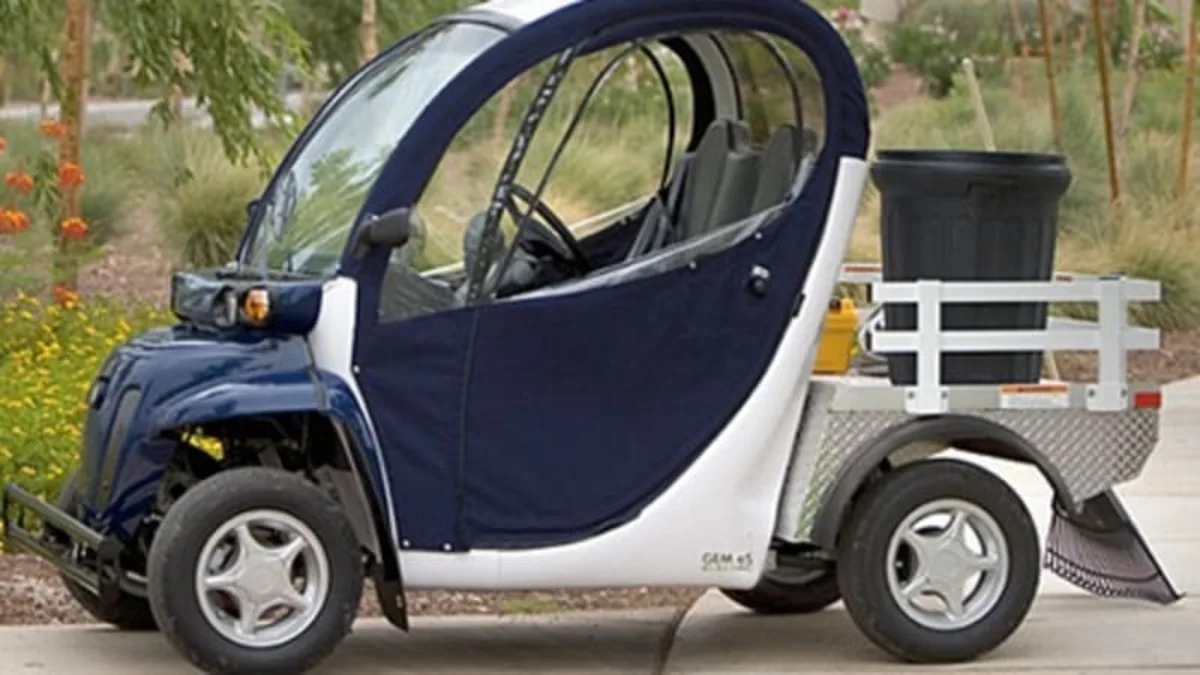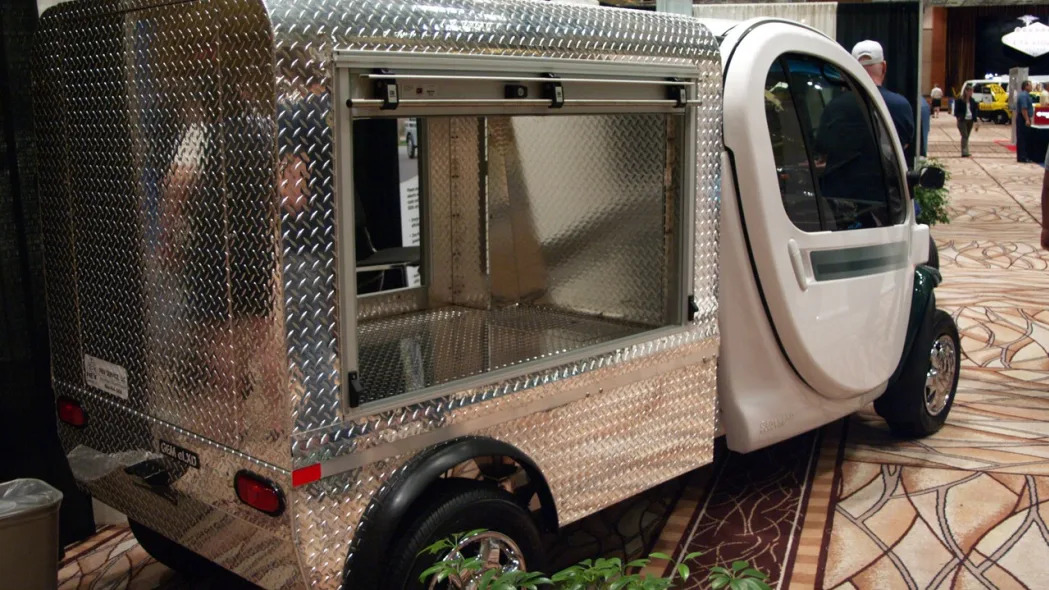We all want electric vehicles that we can afford. Unfortunately the only full function electric car "available on the market" in the United States right now is the Tesla Roadster. However even before car loans became hard to get, the Roadster was largely unaffordable. So, what other options are there? For now at least the only option is the neighborhood electric vehicle, also known as NEVs.
 These are not exactly full function vehicles. In fact, most NEVs are considered little more than glorified golf carts. By law in the United States, NEVs are limited to no more than 25 mph (although a few locations are looking to increase that to 35 mph). NEVs are covered by Federal Motor Vehicle Safety Standard (FMVSS) 500 which limits the maximum loaded weight to 3,000 lbs. According to FMVSS 500, an NEV has to be able to get to 20 mph within 1 mile, must have head and tail lights and a windshield, among other things. Learn more about NEVs after the jump.
These are not exactly full function vehicles. In fact, most NEVs are considered little more than glorified golf carts. By law in the United States, NEVs are limited to no more than 25 mph (although a few locations are looking to increase that to 35 mph). NEVs are covered by Federal Motor Vehicle Safety Standard (FMVSS) 500 which limits the maximum loaded weight to 3,000 lbs. According to FMVSS 500, an NEV has to be able to get to 20 mph within 1 mile, must have head and tail lights and a windshield, among other things. Learn more about NEVs after the jump.
 These are not exactly full function vehicles. In fact, most NEVs are considered little more than glorified golf carts. By law in the United States, NEVs are limited to no more than 25 mph (although a few locations are looking to increase that to 35 mph). NEVs are covered by Federal Motor Vehicle Safety Standard (FMVSS) 500 which limits the maximum loaded weight to 3,000 lbs. According to FMVSS 500, an NEV has to be able to get to 20 mph within 1 mile, must have head and tail lights and a windshield, among other things. Learn more about NEVs after the jump.
These are not exactly full function vehicles. In fact, most NEVs are considered little more than glorified golf carts. By law in the United States, NEVs are limited to no more than 25 mph (although a few locations are looking to increase that to 35 mph). NEVs are covered by Federal Motor Vehicle Safety Standard (FMVSS) 500 which limits the maximum loaded weight to 3,000 lbs. According to FMVSS 500, an NEV has to be able to get to 20 mph within 1 mile, must have head and tail lights and a windshield, among other things. Learn more about NEVs after the jump.
NEVs are small and often seat just two people - although GEM does offer models with up to six seats. The speed limitation arises from the fact that these vehicles are not designed to provide any real protection to passengers in the event of a crash. Due to their limited performance, these little battery-powered conveyances are restricted to roads with speed limits of 35 mph or less.
To keep costs down, NEVs typically use deep cycle lead acid batteries rather than more advanced technologies like nickel metal hydride or lithium ion. As a result, range is generally limited to no more than 30-40 miles. The batteries also usually need to be replaced every few years. Vehicles like this generally have little in the way of amenities; if you're lucky you get a radio and an electric heater. If you so desire, you can get one that looks like a HUMMER.
NEVs are best suited for closed environments like campuses or gated communities, where they can be easily plugged in and stored and don't often come into high-traffic areas. People living in urban environments where speeds are typically low may also be able use an NEV. Many NEVs are also available with small pickup beds or storage racks on the back, making them useful as utility vehicles.
In Europe there is a vehicle classification called the quadricycle for these small low speed vehicles. Perhaps the best known of the electric quadricycles is the G-Wiz, built by India's REVA. Unfortunately for REVA, the G-Wiz is well-known for its less than stellar performance in crash tests.

A number of manufacturers produce NEVs for the U.S. market with some of the best-known being GEM, Miles EV, and ZENN. There are also a number of Chinese-built NEVs such as the Flybo (a clone of the smart fortwo). One issue that potential NEV buyers should keep in mind is the financial stability of the manufacturer. Since many are startup companies, they may not stick around to provide service or replacement parts. One example is American Electric Vehicles, the manufacturer of the Kurrent. We visited AEV and drove the Kurrent in early 2007. Unfortunately AEV now appears to be defunct, although the website is still up. We've received a couple of emails from readers who bought Kurrents and now need service or parts for non-running vehicles. GEM, on the other hand, is a Chrysler brand and has sold tens of thousands of NEVs over the years. As always, caveat emptor.






Sign in to post
Please sign in to leave a comment.
Continue